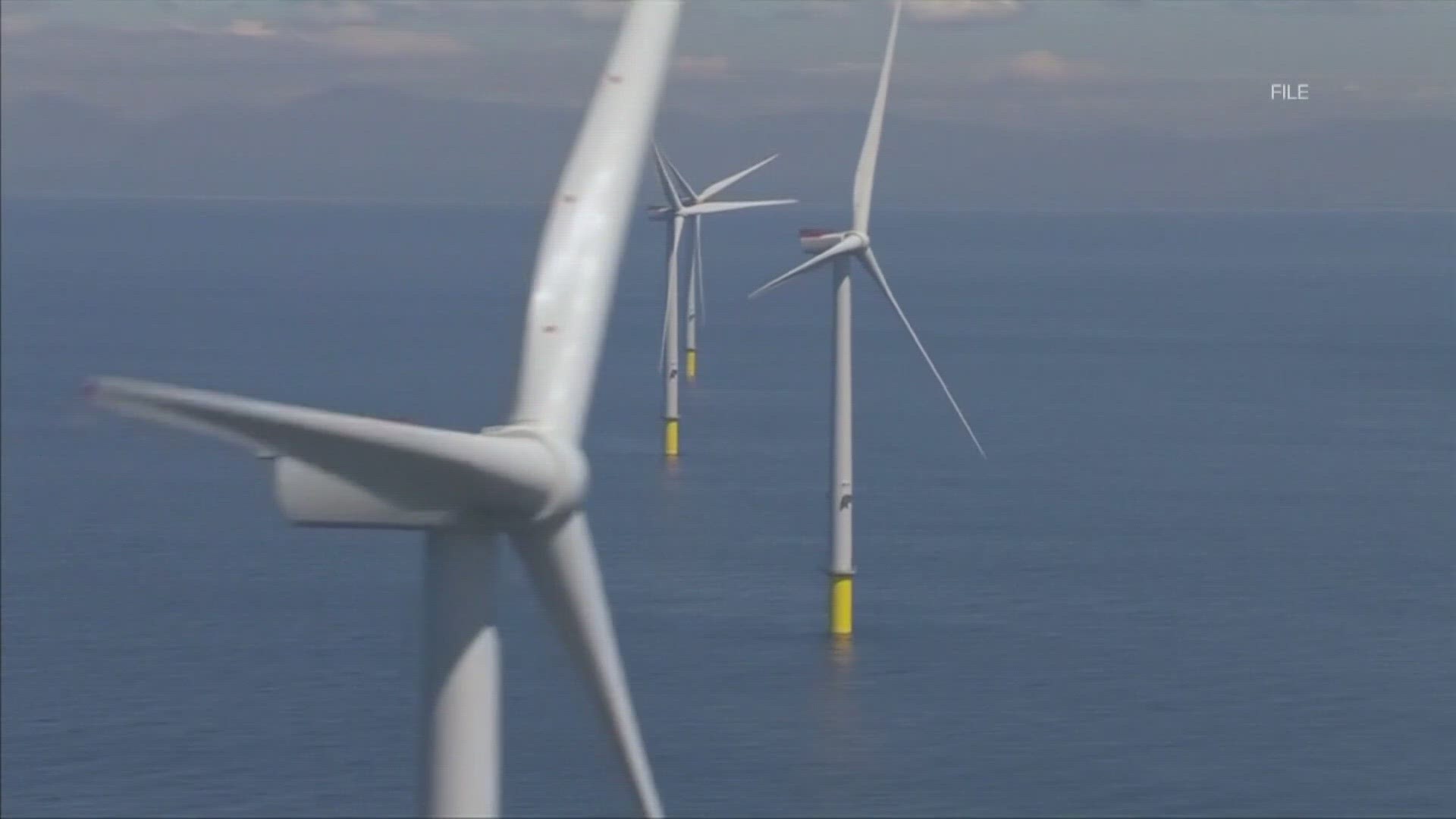MAINE, USA — Federal officials announced Friday they have identified a 2-million-acre swath of the Gulf of Maine for a commercial wind farm.
The designated area ranges from about 23 to 93 miles off the coasts of Maine, New Hampshire, and Massachusetts.
The Bureau of Ocean Energy Management said the area is 80% smaller than the initial proposal and avoids lobstering areas, tribal fishing grounds, and the habitat of the critically endangered North Atlantic right whale.
"(The bureau) is committed to maintaining strong collaboration with the states of Maine, Massachusetts, and New Hampshire as we advance our efforts in the Gulf of Maine," BOEM Director Elizabeth Klein said in a statement. "We remain dedicated to engaging with Tribal governments, federal and state agencies, ocean stakeholders, coastal communities, and all interested parties as we progress through our environmental review."
The Maine Lobstermen's Association, however, issued a statement opposing a wind farm in the gulf.
"(The association) remains steadfast in its position that no area of the Gulf of Maine should be industrialized with offshore wind," the association said in a statement. "There are still too many unanswered questions about the impacts of offshore wind on the marine environment, commercial fishermen and our fishing heritage."
Gov. Janet Mills, U.S. Sens. Susan Collins and Angus King, and Rep. Chellie Pingree signaled their support for the designated area in a joint statement: "The Bureau has heeded our concerns and the majority of the concerns of Maine’s fishing communities in its final designation of Wind Energy Areas for the Gulf of Maine. This decision preserves vital fishing grounds and seeks to minimize potential environmental and ecological impacts to the Gulf of Maine. We look forward to reviewing the final map in detail and urge the Bureau to continue to engage with Maine’s fishing industry, coastal communities, Tribal governments, and other key maritime users and stakeholders as the commercial leasing process moves forward.”
Offshore wind is a priority for the Biden administration, which has recently approved six projects. The first, a 12-turbine array 35 miles off the coast of Montauk Point, New York, called South Fork Wind, went online this week. It can produce 132 megawatts of power, enough for over 70,000 homes, officials said.
The Gulf of Maine wind farm would be much larger, with the potential to generate 32 gigawatts, according to the bureau, which said it's exploring more opportunities across the country.
"(The bureau) also continues to take steps to evolve its approach to offshore wind to drive towards union-built projects and a domestic-based supply chain," it said.
The Maine AFL-CIO supports the wind farm.
"Offshore wind has the potential to transform our coastal economies with thousands of well-paying union jobs, make Maine more energy independent, and substantially cut our climate pollution, but it’s crucial that these projects are sited properly so that our fishing communities are protected," Cynthia Phinney, president of the Maine AFL-CIO, said in a statement.
Last month, Mills announced her recommendation to build a turbine assembly facility at Sears Island that could support the wind farm.
The bureau said it plans to conduct an environmental study of the potential impacts of a wind farm in the Gulf of Maine and gather public comments before exploring a lease.
"(The bureau) will continue to consult with all Tribal Nations, the fishing industry, and other stakeholders who have an interest in the region to understand their concerns with potential offshore wind energy development," it added.
Maine Audobon said the designated area is away from the most "high-conflict wildlife areas."
"We will pursue additional wildlife safeguards throughout the leasing process, but this announcement is a very important step in the right direction," Maine Audobon biologist Sarah Haggerty said in a statement.

